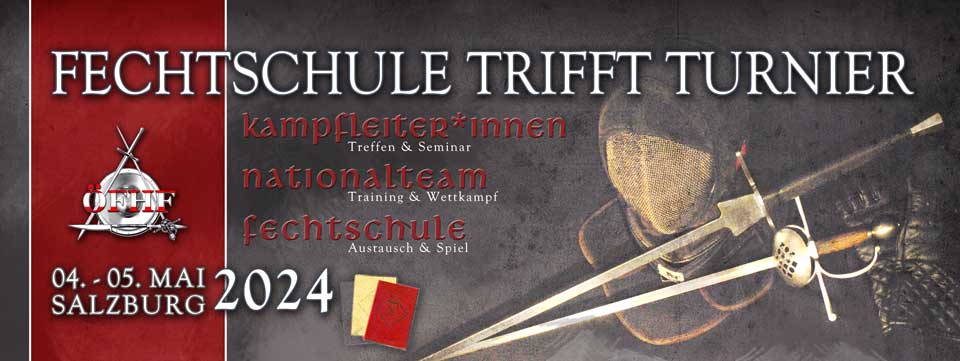I often read questions on Reddit and Social Media about Historical European Martial Arts (HEMA) in Germany, like „How many people practice HEMA in Germany?“, „Where in Germany can I train weapon X?“, „Are there good museums for arms and armor in Germany?“ or what the tournament community here looks like.
I do have articles, maps and academic papers here on HEMA Guide answering all of these questions, but apparently they are a bit hard to find. So I’ll give you an overview in this article of what the HEMA community in Germany looks like and what you need to consider when visiting or moving here.
Content
Find a HEMA club in Germany
If you’re coming to Germany to fence HEMA you are probably looking for a local HEMA club. Lucky for you I have a map and list of HEMA groups in Germany, that I update at least once a year.
(If you’re German and your club is missing, add a comment to the Google Sheet and you’ll be included on the next update.)
Click here for more methods on how to find a HEMA club in Germany.
When visiting a club make sure to announce yourself beforehand instead of just dropping in! Not every club is big enough to handle spontaneous drop ins, so do the polite thing and let them know you’re coming. Also make sure to be there at least 10 minutes early, so that you have time to change into your sports clothing and the class can start on time. Don’t be late, Germans value punctuality.
Note that the HEMA community in Germany is very diverse in their approach to HEMA, both between different clubs and sometimes even between different classes in a club. You will be able to find anything from low gear (think mask and gloves and light hits), to no gear (just a sword, no hits) to full equipment training (with potentially harder hits), with some clubs absolutely hating tournaments, while other clubs enjoy them.
Depending on who you visit, the local club might be more or less open to trying a different approach (read: your approach). This has to do with club culture, but also with insurance regulations and they might not be allowed to do things differently, even if they wanted to. So don’t expect a full gear club to do some no gear sparring with you and vice versa, unless you asked first if that is an option. Their house, their rules.
Clubs usually have some loaner gear though, so again, just ask beforehand if you’re unsure you have everything that you need or what their approach is.
Find a HEMA club for a specific weapon
What neither the map nor the list contains are what HEMA weapon each club trains. One reason is that that often changes as trends and motivated members that push a certain weapon come and go and, with nearly 200 clubs, that data would be out of date in a matter of weeks.
The second reason is that even though a weapon system is not listed on a clubs website, this does not mean that no one there trains it. Especially in larger clubs there is often a minority training a particular weapon, without it being an official club activity with dedicated classes. If you have special interests and are in a certain city, just ask nicely if they know of people training that in the area.
The good news: If you want to learn longsword nearly every club offers classes for it! For everything else you have to look at a clubs website.
The numbers: Practitioners & Clubs
I collected the numbers of HEMA clubs and practitioners in 2019 and 2021 in a project called the ‚HEMA Zensus‚ (English ‚HEMA Census‚).
Two interesting findings are that there were around 4500 HEMA practitioners in Germany in (back then) around 180 HEMA groups. This is a basic extrapolation based on the collected data, but still the most detailed data set of its kind to date.
You can read the English paper here for free. The paper does contain all the details of how the data was collected and so on, so if you’re just interested in the numbers head to ‚III. Results‘ straight away.

If you want just the graphics without the papers explanations (and are fine with all text being in German), use these links for the 2021 and 2019 HEMA Zensus results:


Finding HEMA events in Germany
As there are nearly 200 HEMA groups in Germany, there are multiple seminars, workshops and tournaments happening each weekend. As there are groups in nearly every part of Germany, the chances are high that something is happening just a 2h – 3h drive from where you are. (That’s especially true if you take the neighboring countries into account).
The best way to find events in Germany, Austria and Switzerland is to search HEMA.Events, a HEMA event calendar for these countries, which is also run by me.
Not every event is listed there of course, but most are and it should give you enough information on which clubs are doing what to help you search further. (And the alternative is to read each groups website individually, which can take a long time).
In general the concentration of clubs and events is the highest in the states of Bavaria and Baden-Württemberg and the Ruhr area. The biggest HEMA event in Germany is the Swordtrip Gathering each April in Munich and the biggest longsword tournament is the Symphony of Steel each February in Ulm. There are many more events that are good fun and worth a visit, these two are just the largest. (Also, those two events are highly sought after so you will have a hard time getting a ticket)
German vs English speaking events
One caveat is that most HEMA events in Germany are held exclusively in German. As the HEMA population here is so large, there is less of a need to do everything in English as the default as is the case in other regions like Scandinavia. If the events website has an English version and international instructors, that is usually a good sign that international guests are expected. If in doubt just ask per mail what their stance is on English speaking guests.
Note that most Germans, especially in the age range and income levels where HEMA is happening, do speak English fluently and will be able to understand you and respond to your questions. It’s just that if you visit a class or event that targets a German speaking audience and you are the only non German speaker, the overall language will be German and someone will need to translate (don’t expect the whole class to switch to English just for you). An event with an international audience will do everything in English as the default.
By the way, in cities like Berlin that are inherently international and where many foreigners live, the likelihood of an event or class being held in English is much higher than in less international regions.
Connecting with the local HEMA community online
There are several public online communities dedicated to HEMA in Germany, there’s the HEMA D.A.CH. Facebook group, the Schwertgeflüster Discord (Schwertgeflüster is Germany’s own HEMA podcast which, you guessed it, is co-hosted by me) and a subreddit called r/hemadach.
They all are in German of course, but I believe they are a good place for questions like „I’m visiting city x in month y. Where can I do HEMA activity Z?„
Traveling Germany with swords
You can take blunt training swords with you on public transport, as they are not classified as weapons (German term: „Waffe“), but sport equipment (German term: „Sportgerät“). However, I would recommend to fully wrap up your swords or put them in a closed bag while traveling, to avoid unnecessary attention and questions.
This is especially true if you enter a „Waffenverbotszone“, which tend to be around some of the largest train stations in the country, where the law regarding weapon transportation is even stricter. Again, a training sword is not counted as a weapon, but you don’t want to find yourself in the situation of explaining that to a policeman that might or might not speak English.
If the police or other officials have questions, stay calm, be friendly and explain to them that these are training swords made for use in sports, as is evident by them having blunted edges etc. You can also point out your other sporting gear like your fencing mask or gloves. They might also want to know where you are heading, to check if your going to or coming from training. (Having a clear purpose on why you have swords with you right now, is much less suspicious than people just randomly walking around with them)
But don’t worry too much, the German police is usually very reasonable and chill when it comes to training swords, but of course that depends on the individual you’re talking to and what the overall situation in the region at a given time is.
Arms and Armor museums
There are many museums, collections and castles that display historical Arms and Armor. You could visit Deutsches Klingenmuseum Solingen, Veste Coburg, Bayerisches Nationalmuseum or Rüstkammer Dresden, just to name a few amazing museums with large collections.
If you are like me and that is your kind of thing, check out this (incomplete) map for central Europe:
Note: This map started as my personal documentatiom of visited museums, so there are more places listed in southern Germany than in the north west. You will of course find Arms and Armour museums in those regions as well.
Visit a castle, palace or ruin
Who doesn’t like to visit a castle or ruin while in Germany? No matter where you are, there are hundreds if not thousands of castles and their remants nearby. Both burgenatlas.de and burgenarchiv.de have extensive maps with descriptions:




